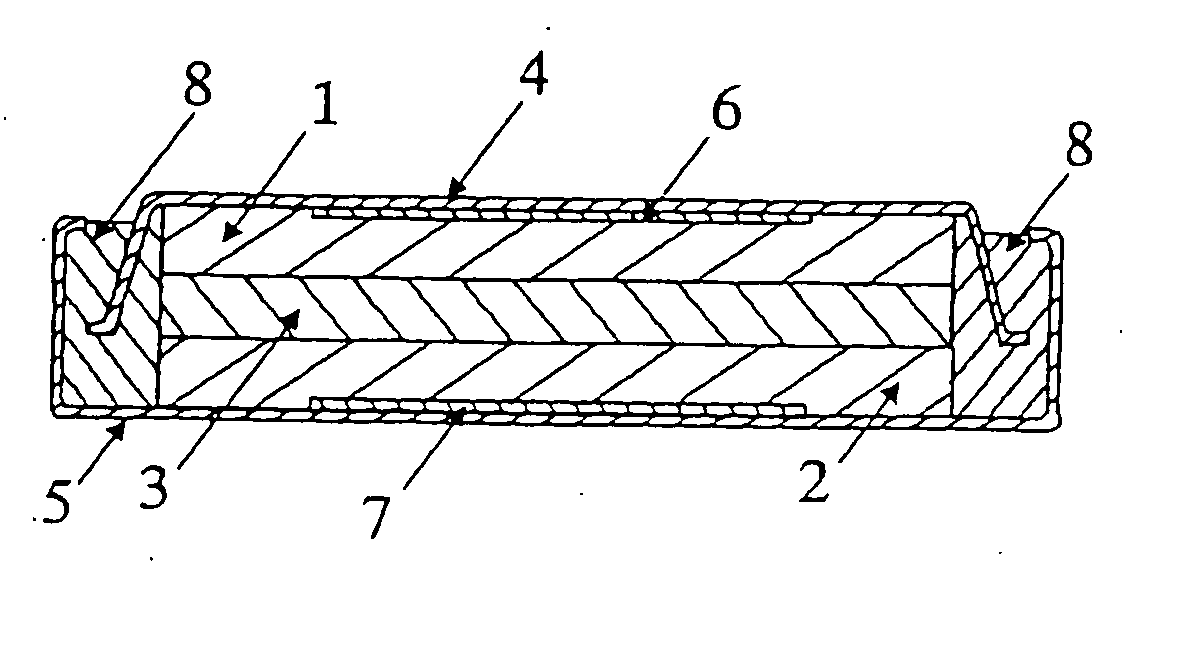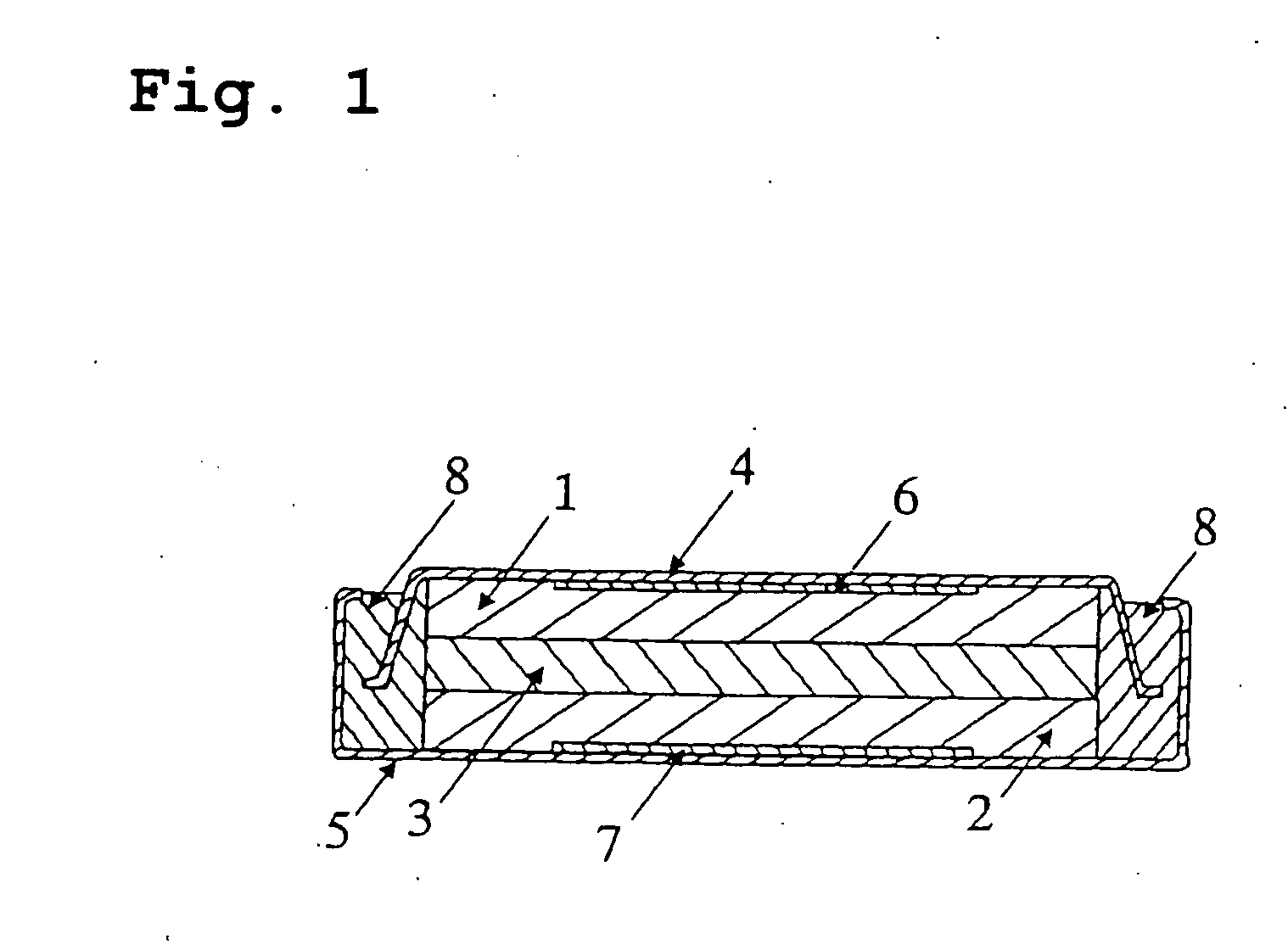Lithium secondary battery
a secondary battery and lithium battery technology, applied in the direction of non-aqueous electrolyte cells, cell components, cell component details, etc., can solve the problems of insufficient storage characteristics of a reflow battery used for memory back-up, undesirable electrolyte has not been developed, etc., and achieve excellent storage characteristics.
- Summary
- Abstract
- Description
- Claims
- Application Information
AI Technical Summary
Benefits of technology
Problems solved by technology
Method used
Image
Examples
experiment 1
Example 1-1
[0027] [Preparation of Positive Electrode]
[0028] Lithium manganese oxide (LiMn.sub.2O.sub.4) powder having a spinel structure, carbon black powder as a conductive agent and a fluororesin powder as a binding agent were mixed in a ratio by weight of 85:10:5 to prepare a positive electrode mixture. The positive electrode mixture was fabricated into a disc by foundry molding, and was dried at 250.degree. C. for 2 hours under vacuum to prepare a positive electrode.
[0029] [Preparation of Negative Electrode]
[0030] Lithium film in an amount which provided a lithium concentration of 15 mol% relative to aluminum was put on an aluminum-manganese alloy plate (the manganese content based on the total weight of aluminum and manganese is 1 weight %), and the plate was dipped in a nonaqueous electrolyte prepared below to occlude lithium electrochemically in the aluminum-manganese alloy and to prepare a lithium-aluminum-manganese alloy (Li-Al-Mn). The lithium-aluminum-manganese alloy was ...
example 1-2
[0037] A battery A2 of the present invention was prepared in the same manner as Example 1-1 except that a non-woven fabric of quartz glass was used as a separator.
example 1-3
[0038] A battery A3 of the present invention was prepared in the same manner as Example 1-1 except that a non-woven fabric of soda glass was used as a separator.
PUM
| Property | Measurement | Unit |
|---|---|---|
| thickness | aaaaa | aaaaa |
| outer diameter | aaaaa | aaaaa |
| temperature | aaaaa | aaaaa |
Abstract
Description
Claims
Application Information
 Login to View More
Login to View More - R&D
- Intellectual Property
- Life Sciences
- Materials
- Tech Scout
- Unparalleled Data Quality
- Higher Quality Content
- 60% Fewer Hallucinations
Browse by: Latest US Patents, China's latest patents, Technical Efficacy Thesaurus, Application Domain, Technology Topic, Popular Technical Reports.
© 2025 PatSnap. All rights reserved.Legal|Privacy policy|Modern Slavery Act Transparency Statement|Sitemap|About US| Contact US: help@patsnap.com


